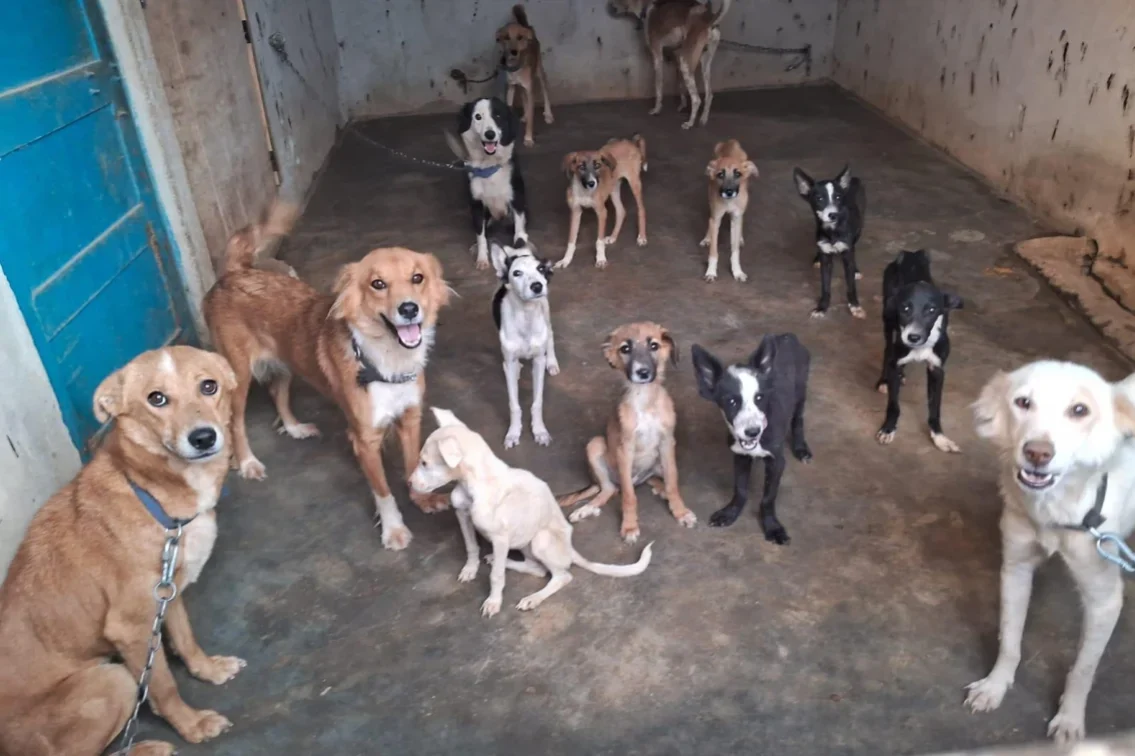Aggression in dogs happens from time to time, and it can be difficult to handle – but it’s often a cry for help. Learn how to be more compassionate towards aggressive dogs and deal with them productively.
We’ve all been there – a stray dog is unreasonably aggressive without cause or warning, a neighbourhood watchdog runs at you from out of nowhere, your own dog suddenly bites – and it always hurts. The first thing we do when this happens is protect ourselves, even at the expense of the dog. Our first instinct is to get angry and blame the dog’s behaviour. Perhaps we want that particularly angry stray out of the neighbourhood. It takes a lot of patience and understanding to look at things from the dog’s perspective, and often, we might feel that’s not necessary because after all, our children or our loved ones might be at risk too.
People often try to surrender dogs to VOSD because of aggressive behaviour that they can’t handle. We also take in these dogs if there is no hope for rehoming, adoption, or a safe space. But we feel it is important to guide more people on how to handle aggression – because it is not a death sentence or the end of your relationship with that dog!
What is aggressive behaviour in dogs?
Aggression is a type of behaviour that comprises many different things. It is in no way a unique trait in animals. For example, a pack of wolves will show “aggression” when they are guarding their territories. A stray dog might show “aggression” if they feel that their young pups are under threat. Dogs in particular show this “aggression” in different ways. It usually refers to angry-seeming behaviour that appears like an attack.
What are the signs of aggression in dogs?
The usual signs of aggression in dogs are as follows:
- Growling and snarling
- Becoming extremely still and stiff
- Charging
- Snarling
- A quick bite that doesn’t leave a deep wound
- Biting repeatedly and puncturing the skin
- Biting with a vice-like grip and shaking (a proper attack)
The order of this can change, but the above mentioned behaviours are the commonly seen forms of aggression that can scare and worry anyone.
What you should understand about dogs is that they know what will hurt and what won’t – thanks to centuries of understanding and evolving alongside human beings.They also give warnings beforehand, most of the time.
Types of aggression in dogs
As mentioned earlier, there are so many kinds of aggression that you might deal with. How do you know what is what before placing the blame on the dog entirely? What should you be aware of and how can you classify the different types of aggression? Like humans, dogs get angry, territorial, and aggressive for numerous reasons. We know what might provoke us and what might make us feel threatened. We should do the same for dogs.
Protectiveness
Your dog might notice you interacting with somebody new, not know anything about the third party, and become aggressive. Usually, when a dog is feeling protective, it might bark a lot and snarl. In very rare cases it might charge and attack – but it will usually listen to your commands. Don’t punish your dog for showing love for you by protecting you.
Territorial behaviour
Your dog is probably used to its space and has established a routine within that space. When there is a perceived intruder who comes into that space, your dog might get territorial and feel threatened. This is when it might show territorial aggression.
Fear
Fear has no logic behind it – when we are scared, we will do anything in our power to escape the situation, even if it harms people around us. Dogs are the same. If they feel cornered and threatened, then they are very likely to attack.
Possessiveness
Certain types of dogs can be possessive of objects, people, spaces, and so on. This could lead to aggression on account of the feeling of ownership.
Social aggression
Alpha dogs – dogs that are domineering and have a high status in a pack, could show aggression to mark its territory and assert power.
Aggression due to pain
Dogs that are suffering from a lot of pain – for example in the case of choking, or in the case of other trauma and injury, are likely to react aggressively. It is always important to handle dogs with care while you are trying to care for them, and be prepared for sudden aggressive behaviour.
Sexual aggression
Male dogs, in the event of sexual frustration, especially if they have not been sterilized, can sometimes act aggressively in a bid for attention from the female.
Indirect aggression
In a scenario where a dog is engaged in a fight with another dog, intervention could be dangerous as one of those dogs might be aggressive towards you.
Aggression is natural, and a part of a dog’s behaviour
Most pet dogs are likely to show aggression towards strangers, and can be unfriendly, bark a lot, or even run after people they perceive to be threatening. Stray dogs can be aggressive towards other new dogs in their territory. This is one of the reasons why it is illegal in India to move a stray dog to a new neighbourhood – it poses numerous risks to their survival.
“So how do I deal with my aggressive dog?”
Now that you have understood many causes of aggression in dogs, and how they might show themselves, you can work with your own dog from a place of awareness. There are just so many other factors that only you will know about as a pet parent. An example could be that your older dog is getting used to a new medical condition and is cranky, moody, and aggressive. Many dogs that aren’t properly handled from childhood can end up aggressive too! There are so many cases of dogs that are kept tied for most of the day, and the pent up energy and the lack of affection is likely to make a dog more violent and angry. Pay attention to how you parent your dog, be gentle, and always think twice before punishing your dog while gently continuing to assert the rules you want it to follow.
Work with your dog’s veterinarian or behavioural therapist to come up with a plan to deal with the dog’s aggression. Reward your dog when it behaves well in a particular situation.
The information contained in VOSD Vet Advice™ is not intended nor implied to be a substitute for professional medical action which is provided by your vet. You assume full responsibility for how you choose to use this information. For any emergency situation related to a dog’s health, please visit the nearest veterinary clinic.
Do you find this article useful and informative? For more on dog behaviour, visit the VOSD website.





